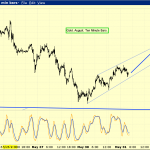Ahead of the policy committee meeting to be held next week, speculation of a rate hike is rife. There are many who expect a hike after a recent upbeat job report, improved inflation data and a rise in consumer spending levels.
Goes without saying, the real estate investment trust (REIT) sector, in particularly the mortgage REIT (popularly known as mREIT) segment, has started to worry. But instead of letting all the guesswork get on your nerves, think beyond funding costs and dig deeper into the operating mechanisms to pin down the impact of a rate hike on mREITs.
How are mREITs Placed?
Unlike Equity REITs that hold properties like shopping malls, office buildings and apartments and earn rents form their tenants, mREITs offer real estate financing through the purchase or origination of mortgages and mortgage-backed securities. They depend on short-term loans like repurchase agreements for their funding and earn profits from the spread between interest income on their mortgage assets and their funding costs. In short, generally mREITs borrow for short-term, lend for long-term and benefit from the spread, implying that they gain more when the yield curve becomes steeper.
Now, a yield curve becomes steeper when the gap between the short-term and the long-term rates increases, denoting that long-term rates are rising faster than the short-term ones, or that the short-term rates are falling and the long-term rates are rising. Since the second case is not applicable here considering the current short-term rate trend in the U.S., a steeper yield curve is essentially a sign of investors’ expectation of a rise in inflation or of solid economic growth.
This is because as the future value of an investment declines with rising inflation, investors end up demanding higher long-term rates to compensate for the lost value. Also, when the economy grows, demand for long-term capital increases, driving long-term rates higher.
And according to the latest data from the U.S. Commerce Department, the domestic economy is essentially experiencing a rise in inflation. The personal consumption expenditures index (PCE), a measure of inflation preferred by the Fed, climbed 1.3% in January from the year-ago level while the so-called “core” inflation, which excludes food and energy prices, saw a rise of 1.7%.
Well, the level seems closer to the Fed targeted 2%. This is all the more justified with Fed Vice Chairman Stanley Fischer recently proclaiming at an economic conference that “we’re not that far away” from the desired inflation level, with stabilization of oil prices and the dollar.
mREIT Stocks to Buy Now












Leave A Comment